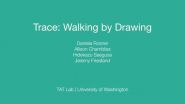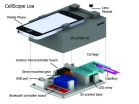(Press-News.org) Insurance coverage has increased across all types of insurance since the major provisions of the federal Affordable Care Act took effect, with a total of 16.9 million people becoming newly enrolled through February 2015, according to a new RAND Corporation study.
Researchers estimate that from September 2013 to February 2015, 22.8 million Americans became newly insured and 5.9 million lost coverage, for a net of 16.9 million newly insured Americans.
Among those newly gaining coverage, 9.6 million people enrolled in employer-sponsored health plans, followed by Medicaid (6.5 million), the individual marketplaces (4.1 million), nonmarketplace individual plans (1.2 million) and other insurance sources (1.5 million).
The study also estimates that 125.2 million Americans -- about 80 percent of the nonelderly population that had insurance in September 2013 -- experienced no change in the source of insurance during the period, according to findings published online by the journal Health Affairs.
"The Affordable Care Act has greatly expanded health insurance coverage, but it has caused little change in the way most previously-covered Americans are getting health insurance coverage," said Katherine Carman, the study's lead author and an economist at RAND, a nonprofit research organization. "The law has expanded coverage to more Americans using all parts of the health insurance system."
The RAND study estimates 11.2 million Americans are insured through new state and federal marketplaces created under the Affordable Care Act, including 4.1 million who are newly covered and 7.1 million people who transitioned to marketplace plans from another source of coverage.
In addition, among the 12.6 million Americans newly enrolled in Medicaid, 6.5 million were previously uninsured and 6.1 million were previously insured.
The RAND study is the first to examine insurance transitions since the end of the second open enrollment period under the Affordable Care Act.
It analyzes information from the RAND Health Reform Opinion Study, a survey that has followed a representative sample of about 1,600 Americans aged 18 to 64 from September 2013 through February 2015. Participants are questioned periodically about whether they have health insurance, their source of insurance and other related questions.
None of the other surveys with equally current data on changes in coverage caused by the Affordable Care Act provide longitudinal information about coverage transitions, and none of the other longitudinal surveys are as current.
RAND researchers say the findings that the biggest gain in coverage was from employer-sponsored insurance runs counter to predictions that many employers may quit offering insurance in response to the Affordable Care Act and suggests that regardless of whether that occurs, employer-sponsored coverage will remain the nation's major source of health insurance coverage.
Other study findings include:
--Most of the gain in the number of Americans with insurance occurred between September 2013 and May 2014, reflecting the first open enrollment period.
--Coverage through individual nonmarketplace policies declined by 1.9 million and coverage from other sources (Medicare, military insurance and state programs) declined by 10 million over the study period.
--An estimated 24.6 million Americans moved from one source of insurance to another source of coverage during the study period.
INFORMATION:
Support for the project was provided by RAND internal funding. Other authors of the report are Christine Eibner and Susan Paddock.
RAND Health is the nation's largest independent health policy research program, with a broad research portfolio that focuses on health care costs, quality and public health preparedness, among other topics.
Psychologists are to improve online health information on lung cancer after research showed that family members are more likely to search online to encourage loved ones to seek help.
This is one of the outcomes from research by PhD student Julia Mueller based in the School of Nursing, Midwifery and Social Work at The University of Manchester (part of the Manchester Cancer Research Centre) who will present her study today, Thursday 7 May 2015, at the Annual Conference of the British Psychology Society being held in Liverpool.
Julia Mueller said: "People displaying ...
The ulcer-causing bacterium Helicobacter pylori can directly interact with stomach stem cells, causing the cells to divide more rapidly, according to a new study by researchers at the Stanford University School of Medicine.
The increased cell division was observed in mice, but the findings could explain why H. pylori is a risk factor for gastric cancer in humans, the researchers said.
They used 3-D microscopy to identified colonies of the bacteria deep within human stomach glands, where stem cells and precursor cells that replenish the stomach's lining reside.
One ...
MADISON, Wis. -- The suspicion that the federal Affordable Care Act reduces options for patients to choose their health care providers proves to be true, according to a new study co-authored by David Weimer, a professor with the La Follette School of Public Affairs at the University of Wisconsin-Madison. However, the quality of hospitals in insurance exchange networks was as good or better than those in commercial insurance networks.
The study, just published in the May issue of the journal Health Affairs, compared the hospital networks available to California consumers ...
Creative athletes have been using geographic information systems to transform their running routes into kangaroos, robots and other works of art that they share online, and one romantic cyclist last year even spelled out "Will you marry me, Emily?" with his bike.
A new mobile app developed at the University of Washington does the opposite. The Trace app turns a digital sketch that you draw on your smartphone screen -- a heart, maple leaf, raindrop, sailboat -- into a walking route that you can send to a friend or loved one. The recipient of the "gift" tells the app how ...
Scientists at the National Institutes of Health have solved a long-standing mystery about the origin of one of the cell types that make up the ovary. The team also discovered how ovarian cells share information during development of an ovarian follicle, which holds the maturing egg. Researchers believe this new information on basic ovarian biology will help them better understand the cause of ovarian disorders, such as premature ovarian failure and polycystic ovarian syndrome, conditions that both result in hormone imbalances and infertility in women.
Researchers at the ...
The Alaska salmon fishery is touted as one of the best in the world. When measured with an ecological yardstick, it is - fish stocks are healthy and the fishery is certified by the Marine Stewardship Council as consistently meeting rigorous biological standards. Fish are individually counted as they swim upstream to ensure there are enough to breed.
But Alaska salmon falls short and lags behind some of the world's fisheries in how it benefits local fishermen, processing workers and nearby rural communities, according to a new assessment that ranks the vitality of a fishery ...
Diets of snakes from a temperate region in South America may depend more on phylogeny (ancestry) than ecology, according to a study published May 6, 2015 in the open-access journal PLOS ONE by Gisela Bellini from Instituto Nacional de Limnología, Argentina and colleagues.
Some scientists believe that the deep history hypothesis based on phylogeny -- the history of evolution, or ancestry and relationships between snakes -- and ecological interactions from the competition-predation hypothesis may act together to determine the structure of snake communities. The authors ...
Post-surgical leaks that develop after a segment of the colon has been removed and stitched back together often are caused not by negligence or technical error but by bacteria in the bowel that elude antibiotics, according to new evidence about this devastating complication of gastrointestinal surgery.
Such leaks, which can develop days or weeks after the procedure, allow the bowel's contents to spill into the abdomen and can cause pain, fever, sepsis and even death.
In patients undergoing high risk surgery such as in the rectum, leak rates can approach 30 percent. ...
Berkeley -- A research team led by engineers at the University of California, Berkeley, has developed a new mobile phone microscope that uses video to automatically detect and quantify infection by parasitic worms in a drop of blood. This next generation of UC Berkeley's CellScope technology could help revive efforts to eradicate debilitating diseases in Africa by providing critical information for health providers in the field.
"We previously showed that mobile phones can be used for microscopy, but this is the first device that combines the imaging technology with ...
The rise of antibiotic-resistant bacteria is a growing problem in the United States and the world. New findings by researchers in evolutionary biology and mathematics could help doctors better address the problem in a clinical setting.
Biologist Miriam Barlow of the University of California, Merced, and mathematician Kristina Crona of American University tested and found a way to return bacteria to a pre-resistant state. In research published in the open-access journal PLOS ONE, they show how to rewind the evolution of bacteria and verify treatment options for a family ...



